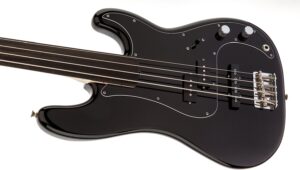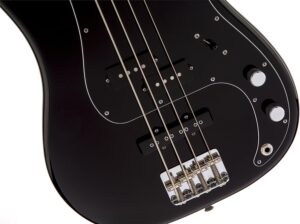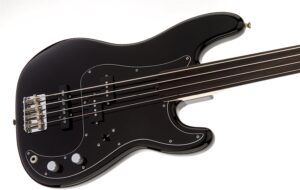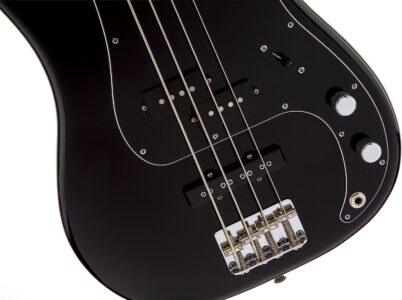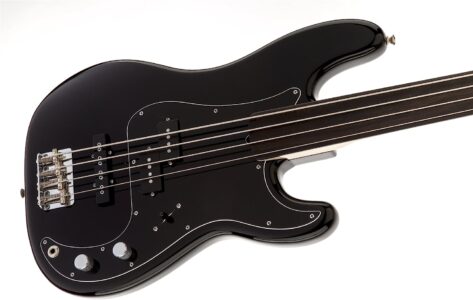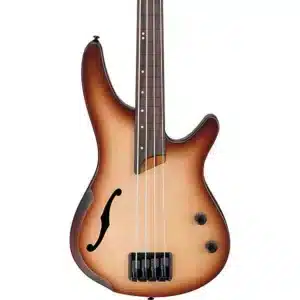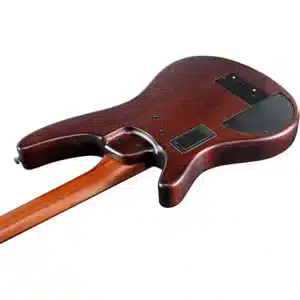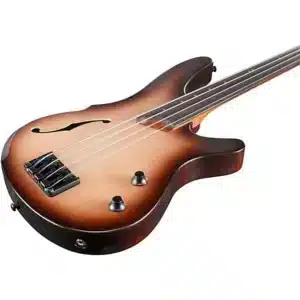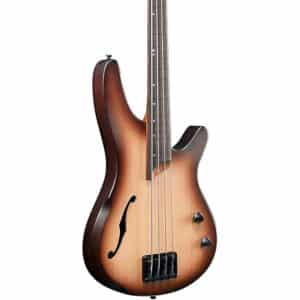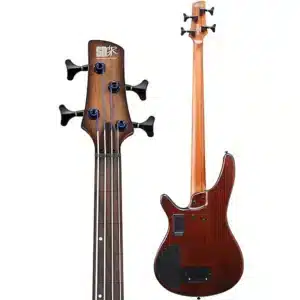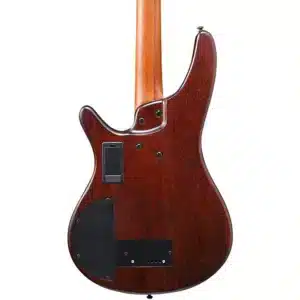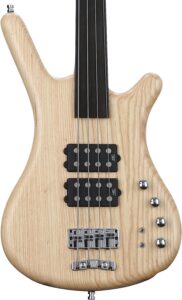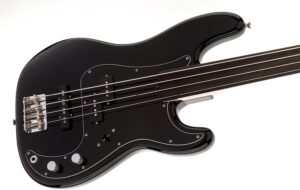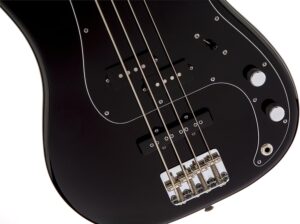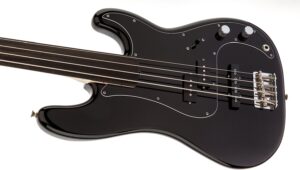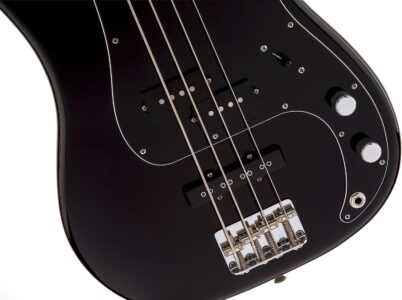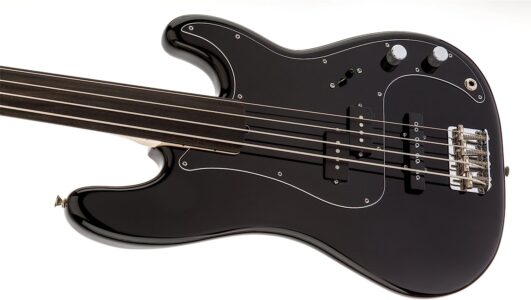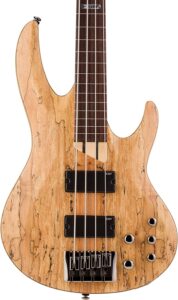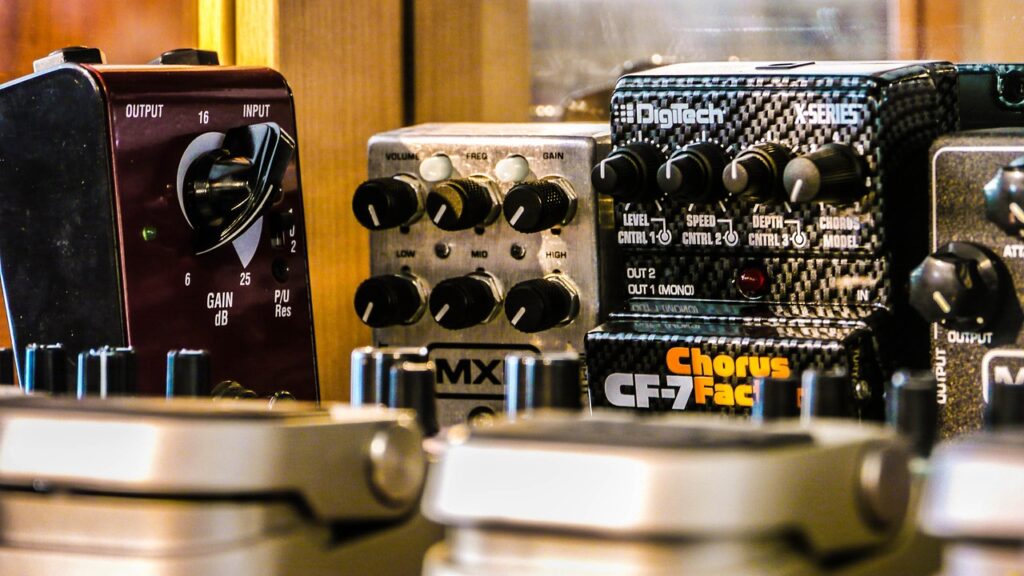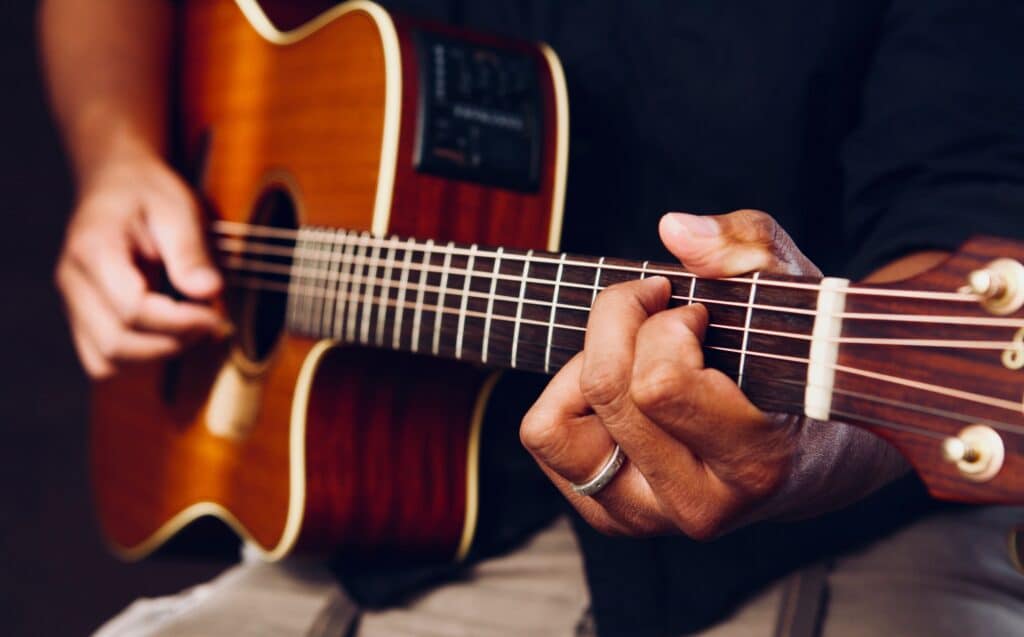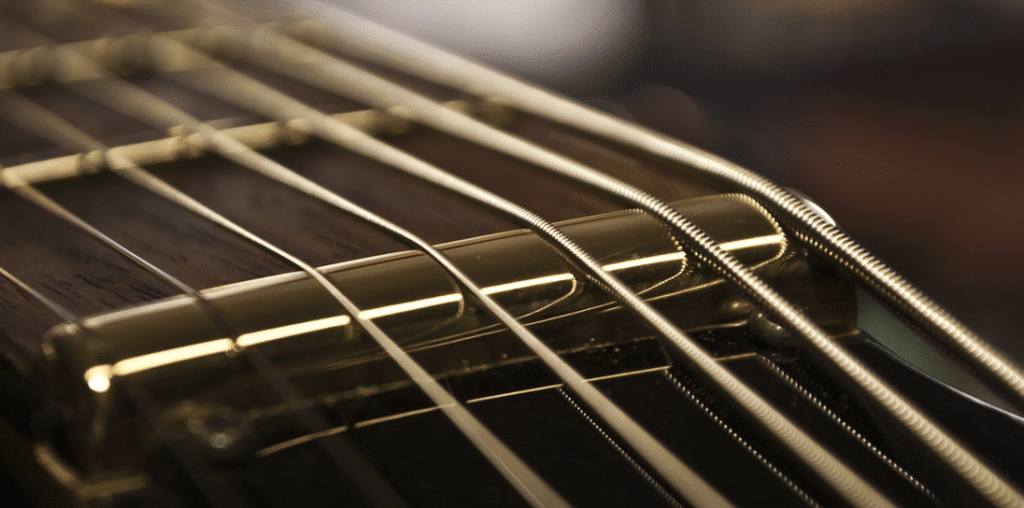Diving Deep into Fretless Bass Guitars
Before discussing the intricacies of fretless bass guitars, it’s important to understand the fundamental difference between a fretted and a fretless bass. A traditional fretted bass guitar has metal bars (frets) along the neck, marking specific notes. The musician presses the string down behind a fret to produce a specific note.
On the other hand, a fretless bass guitar features a smooth neck, more like that of a cello or violin. This lack of frets allows the player to glide seamlessly between notes, creating a “sliding” effect not possible with a fretted bass. This is known as ‘glissando’ or ‘portamento’ in musical terms. The ability to create these slides and ‘microtones’—notes in between the standard semi-tone steps—can lead to a broader, more expressive range of sounds.
Also, the fretless bass is renowned for its distinctive ‘mwah’ sound—a warm, resonant, and vocal-like tone that really sets it apart. Players of jazz, fusion, and progressive rock will particularly appreciate the creative opportunities that instruments like the Fender Jaco Pastorius Jazz Bass or the Warwick Corvette $$ 4-String Fretless Bass can offer.
Breaking Down the Types of Fretless Bass Guitars
Fretless bass guitars come in two main forms: lined and unlined, and understanding these types can help steer your purchase decision.
Lined fretless basses mimic the look of their fretted counterparts with visual markers (lines) on the fingerboard where frets would normally be. These lines are essential guides, helping players accurately position their fingers to hit the right notes. If you’re transitioning from a fretted bass, a lined fretless model like the Ibanez SRH500F might be more comfortable and familiar.
Conversely, unlined fretless basses offer no such visual aids. These require a more experienced ear and intimate knowledge of the fingerboard to play in tune. The payoff, however, is a more challenging and rewarding playing experience. The Fender Jaco Pastorius Jazz Bass is an example of an unlined fretless bass, providing a clean, minimalist aesthetic.
The Influence of Body Wood
The body wood of your bass guitar, often overlooked, is a significant contributor to the instrument’s overall sound. Different types of wood produce varying tonal qualities.
Alder, used in the Fender Tony Franklin Fretless Precision Bass, is known for its balanced, clear tone with solid lows, mids, and highs. It’s a versatile wood, suitable for many different genres.
Ash, often found in the ESP LTD B-204SM FL, is tonally similar to alder but usually brings a slightly brighter, punchier sound. It’s excellent for players looking for a bit more edge in their tone.
Other common body woods include mahogany, which delivers a rich, warm tone with pronounced mids and is excellent for blues and rock. Maple provides a bright, focused tone, perfect for cutting through the mix in a band setting. An example is the Warwick Corvette $$ 4-String Fretless Bass, whose swamp ash body, maple neck, and fingerboard produce a harmonious blend of warmth and brightness.
Considering Scale Length and Number of Strings
The scale length of a bass guitar is the distance between the bridge and the nut. It impacts both the tone and playability of the instrument. Shorter-scale basses tend to have a warmer tone and are easier to play, especially for beginners or players with smaller hands. Longer-scale basses, meanwhile, produce a brighter tone and offer more room on the fretboard for advanced techniques.
Bass guitars typically come with four strings, but five-string and six-string models are also available. A five-string bass adds a lower B string, expanding the instrument’s lower range, while a six-string bass adds both a lower B and a higher C, offering a greater pitch range. The choice will largely depend on your musical needs and preferences.
Evaluating Hardware and Electronics
Lastly, it’s important to consider the hardware and electronics of your fretless bass guitar. The type and quality of the pickups can drastically affect the instrument’s sound. Like those in the Fender Jaco Pastorius Jazz Bass, single-coil pickups produce a bright, clear tone. On the other hand, humbuckers, like those found in the Warwick Corvette $$ 4-String Fretless Bass, deliver a warmer, fuller sound with less hum and noise.
The quality of the tuning machines, bridge, and control knobs are also vital to the instrument’s overall performance and durability. These components can affect the bass’s tuning stability, intonation, and tone control.







